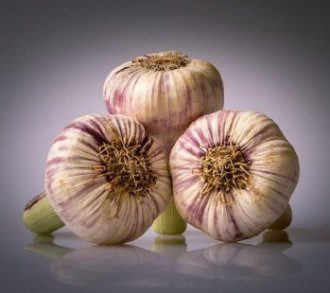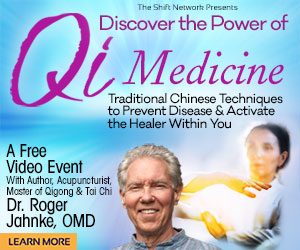By Marco Torres
Guest writer for Wake Up World
Eating raw garlic twice a week reduces your cancer risk by 44%, without any side effects whatsoever. That’s a statistic the cancer industry cannot claim.
The reason so many people die after conventional cancer treatment is that, beside indiscriminately damaging healthy cells, chemotherapy also triggers them to secrete a protein that actually sustains tumour growth and encourages resistance to further treatment. It is only because of forces that have carefully conspired to thwart meaningful advances in ‘alternative’ cancer research and treatment over the past century that chemotherapy is even still practiced. (What reality do we in live when cut, poison and burn are considered the only acceptable ways to treat cancer?)
The Power of Garlic
Garlic (Allium sativum) is a member of the onion family Alliaceae. Garlic has been used throughout history for both its culinary and medicinal properties. Garlic’s distinctive characteristics arise from sulfur, which constitutes almost 1% of its dry weight. Although garlic does not typically serve as a major source of essential nutrients, it may contribute to several dietary factors with potential health benefits, including the presence of oligosaccharides, arginine-rich proteins and, depending on soil and growing conditions, selenium and flavonoids.
Preclinical models provide rather compelling evidence that garlic and its associated components can lower the incidence of breast, colon, skin, uterine, esophagus, and lung cancers. uppression of nitrosamine formation continues to surface as one of the most likely mechanisms by which garlic retards cancer.
The ability of garlic to inhibit tumors due to different cancer-inducing agents and in different tissues indicates that a generalized cellular event is likely responsible for the change in tumor incidence and that the response is highly dependent on environmental or other types of biological insults. Because metabolic activation is required for many of these carcinogens, there is likelihood that either phase I or II enzymes are altered.
A breakdown of allicin appears to be necessary for achieving maximum tumor inhibition. Allyl sulfur compounds preferentially suppress neoplastic over non-neoplastic cells.[1]
It is becoming increasingly clear that the response to allyl sulfurs relates to their ability to form free radicals rather than to serve as an antioxidant.[2] Allyl sulfurs may bring about changes by influencing the genomic expression by affecting histone homeostasis.
Garlic has even been found to be 100 times more effective than antibiotics at fighting the disease-causing bacteria most commonly responsible for food-borne illnesses.
44% Reduction in Cancer Risk
Researchers at the Jiangsu Provincial Centre for Disease Control and Prevention claim to have found a protective association between the intake of raw garlic and lung cancer, advocating that, “garlic may potentially serve as a chemopreventive agent for lung cancer.”
The study, published online in the journal Cancer Prevention Research[3], notes that Chinese medicine has used garlic since 2000 BCE. The authors suggest compounds such as diallyl sulfide–that are released when a garlic bulb breaks into cloves–may contribute to the herb’s potential preventative powers. The researchers did not look at cooked garlic in this study.
A number of studies on garlic have appeared dealing with diallyl sulfide and cancer. One from the Republic of Korea cites diallyl disulfide (DADS) as the most prevalent oil-soluble sulfur compound in garlic, inhibiting cell proliferation in many cell lines. Scientists there examined DADS ability to kill cells in a process involving free radical production. They found that the famous tumor suppressor gene, p53, arrested the cell cycle when DADS treatment was present. Cancer cells died following 24 hour DADS treatment that activated the p53 gene. They also found that DADS induced cell death was prevented by treatment with a compound known to prevent p53 dependent cell death by reducing free radical levels in the mitochrondria, the cellular furnaces. Their results showed that mitochrondrial free radicals may serve as second messengers in DADS-induced cell death, which requires activation of p53. That study was found in the January Journal of Biochemical and Molecular Toxicology.
When scientists looked at 4,500 adults in perfect health and 1,424 adults with lung cancer, they discovered that those who ate raw garlic at least twice weekly had a significantly lower chance of contracting lung cancer. Scientists worked it out to be a 44% less likely chance. Findings were similar even if the adults smoked or were near cooking fumes, with a 30% less likely chance.
The researchers conducted face-to-face, standardised interviews in China with 1,424 lung cancer patients and 4,543 healthy controls which aimed to find out about participants’ lifestyles and diets – in particular how much garlic they ate and whether they smoked.
According to the researchers the “effective components in garlic in lung cancer chemoprevention warrant further in-depth investigation.”
Supplement opportunities
The researchers suggested that diallyl sulphide – a compound released when a garlic bulb sprouts into cloves – may be at the root of garlic’s preventative potential.
Diallyl sulphide is a breakdown of allicin, an antibiotic and anti-fungal compound largely depleted by cooking or pickling.
While the study concentrated primarily on garlic in its raw state, it can also be consumed in tablet, oil, powder, aged and cooked form.
Garlic (allium sativum) is an important ingredient of Chinese medicine and can be found within many traditional herbal remedies and traditional Chinese medicines (TCMs).
Yet proclamations of these health properties can be found outside of China too. The World Health Organisation’s guidelines recommend a dose of around one clove of fresh garlic for adults per day. While garlic tablets are a licensed drug in Germany, where they are prescribed for the treatment of atherosclerosis.
Most of us buy garlic at a supermarket. We don’t know what kind it is, how fresh it is or where it’s grown. But there’s a good chance it comes from China, which produces 75 percent of the world’s supply — and whose food exports have come under scrutiny after recent discoveries of tainted pet food ingredients, toothpaste and more.
According to Euromonitor International, China produced 13,719,1000 tonnes of the world’s 17,789,7000 tonne supply of garlic in 2012.
Garlic is the United States’ biggest fresh-vegetable import from China, which sent 138 million pounds of it worth more than $70 million last year. The U.S. also gets small amounts from Mexico, Argentina and about 15 other countries.
The U.S. Department of Agriculture’s Foreign Agricultural Service says dehydrated Chinese garlic imports increased 384 percent in the past 10 years. Independent lab tests found “high levels of lead, arsenic and added sulfites in two supermarket-brand imported garlic powders from store shelves.”
My advice is to buy garlic locally if you can and avoid chinese garlic whenever possible.
Article references:
- [1] Sakamoto, Lawson, and Milner 1997.
- [2] Antosiewicz et al. 2008
- [3] Raw Garlic Consumption as a Protective Factor for Lung Cancer, a Population-Based Case–Control Study in a Chinese Population
About the author:
Marco Torres is a research specialist, writer and consumer advocate for healthy lifestyles. He holds degrees in Public Health and Environmental Science, and is a professional speaker on topics such as disease prevention, environmental toxins and health policy.
Recommended reading from Marco Torres:
- Hemp Can Free Us From Oil, Prevent Deforestation and Cure Cancer – So Why Is It Illegal?
- The Endocannabinoid System and How THC Cures Cancer
- Cannabis Infused Coffee – Consumers Grow Wise to Health Benefits of Marijuana
- 5 Reasons to Juice Rather Than Smoke Cannabis
- Study Shows The Therapeutic Effects of Marijuana on Autistic Children
- 5 Diseases Proven To Respond Better To Cannabis Than Prescription Drugs
- Cannabis-Based Batteries Could Change the Way We Store Energy Forever
- Another Reason Marijuana is Illegal: It Prevents the Spread of HIV
- 4 Diseases That Can Be Reversed Naturally Without Pharmaceutical Drugs
- The Top 15 Lies You’re Being Told About Health and Mainstream Medicine
Please note: This article originally appeared on PreventDisease.com, reproduced with permission.

If you've ever found value in our articles, we'd greatly appreciate your support by purchasing Mindful Meditation Techniques for Kids - A Practical Guide for Adults to Empower Kids with the Gift of Inner Peace and Resilience for Life.
In the spirit of mindfulness, we encourage you to choose the paperback version. Delve into its pages away from screen glare and notifications, allowing yourself to fully immerse in the transformative practices within. The physical book enriches the learning process and serves as a tangible commitment to mindfulness, easily shared among family and friends.
Over the past few years, Wake Up World has faced significant online censorship, impacting our financial ability to stay online. Instead of soliciting donations, we're exploring win-win solutions with our readers to remain financially viable. Moving into book publishing, we hope to secure ongoing funds to continue our mission. With over 8,500 articles published in the past 13 years, we are committed to keeping our content free and accessible to everyone, without resorting to a paywall.








